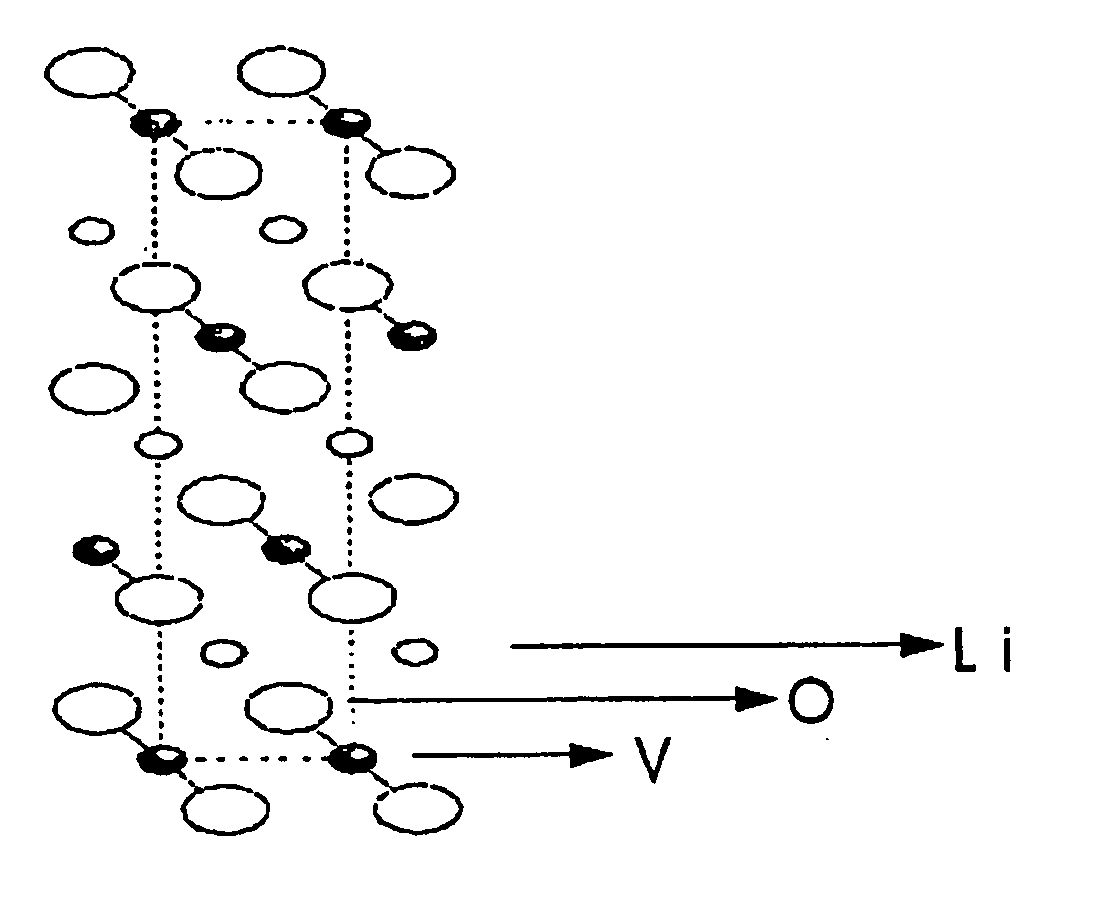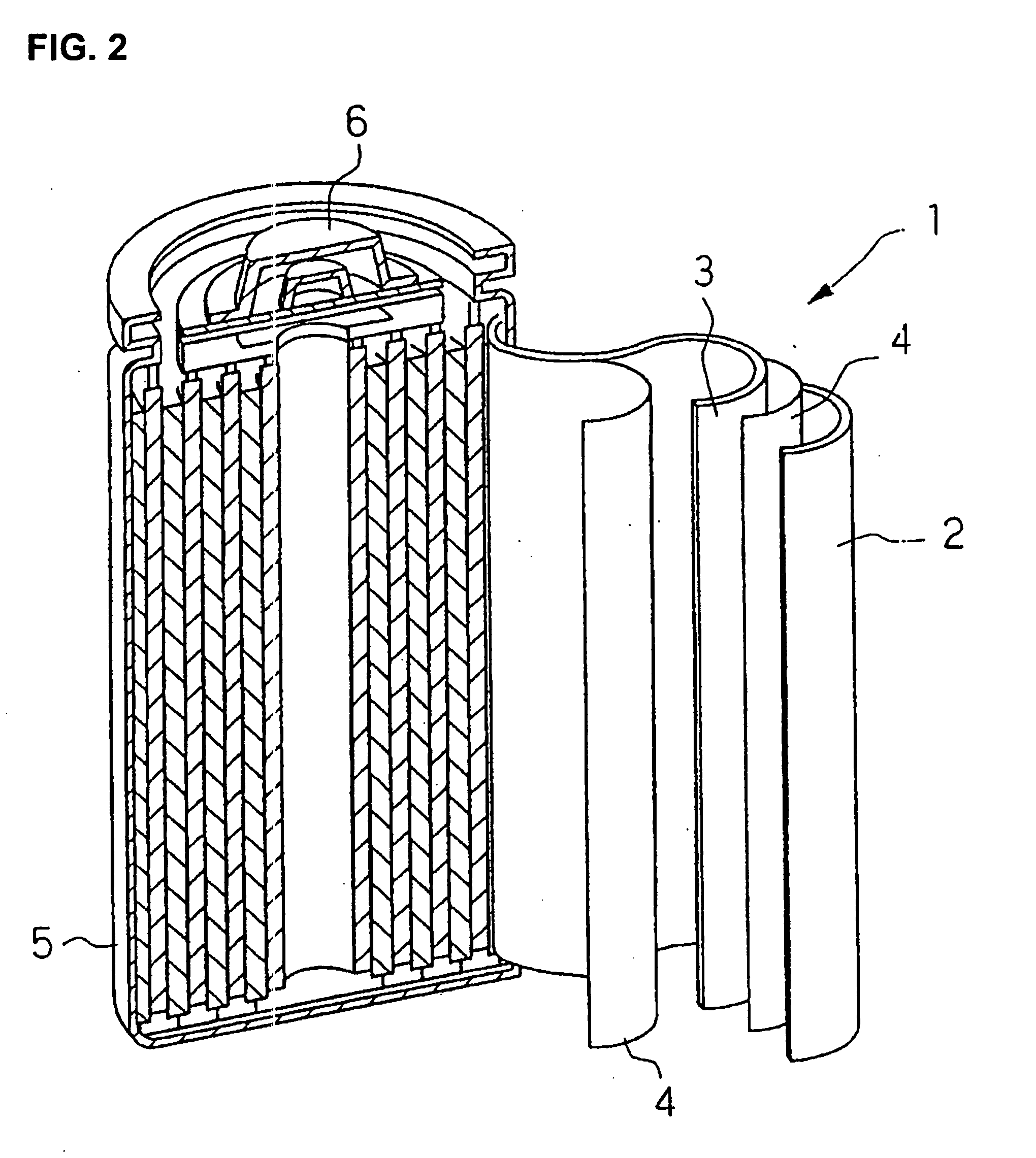Negative active material for non-aqueous electrolyte battery, method of preparing same, and non-aqueous electrolyte battery comprising same
a technology of negative active materials and electrolyte batteries, which is applied in the direction of vanadium compounds, niobium compounds, cell components, etc., can solve the problems of reducing capacity, fire or explosion, and difficulty in the use of negative active materials such as negative active materials, and achieve good safety characteristics
- Summary
- Abstract
- Description
- Claims
- Application Information
AI Technical Summary
Benefits of technology
Problems solved by technology
Method used
Image
Examples
example 1
Li2CO3, V2O4 and MoO3 were mixed at the mole ratio of Li:V:Mo of 1.1:0.89:0.01 without solvent. The mixture was heat-treated at 1100° C. under a nitrogen atmosphere to provide a Li1.1V0.89Mo0.01O2 negative active material. The negative active material had a diffraction pattern of a single phase of an R-3M crystal structure.
80 wt % of the negative active material, 10 wt % of a graphite conductive agent and 10 wt % of a polytetrafluoroethylene binder were mixed in an N-methyl pyrrolidone solvent to prepare a negative active material slurry. The slurry was coated on a Cu-foil current collector to produce a negative electrode. The density of the active mass (a mixture of the active material, the conductive agent and the binder) was 1.6 g / cc.
The charge and discharge characteristics of the negative active material exhibited a high initial reversible capacity of 800 mAh / cc and better cycle life characteristics than the conventional graphite active material.
example 2
A negative electrode was produced by the same procedure as in Example 1, except that the mole ratio of Li:V:Mo was changed to 1.1:0.87:0.03 to prepare a Li1.1V0.87Mo0.03O2 negative active material.
example 3
A negative electrode was produced by the same procedure as in Example 1, except that the mole ratio of Li:V:Mo was changed to 1.1:0.85:0.05 to prepare a Li1.1V0.85Mo0.05O2 negative active material.
PUM
| Property | Measurement | Unit |
|---|---|---|
| density | aaaaa | aaaaa |
| tapping density | aaaaa | aaaaa |
| diameter | aaaaa | aaaaa |
Abstract
Description
Claims
Application Information
 Login to View More
Login to View More - R&D
- Intellectual Property
- Life Sciences
- Materials
- Tech Scout
- Unparalleled Data Quality
- Higher Quality Content
- 60% Fewer Hallucinations
Browse by: Latest US Patents, China's latest patents, Technical Efficacy Thesaurus, Application Domain, Technology Topic, Popular Technical Reports.
© 2025 PatSnap. All rights reserved.Legal|Privacy policy|Modern Slavery Act Transparency Statement|Sitemap|About US| Contact US: help@patsnap.com



